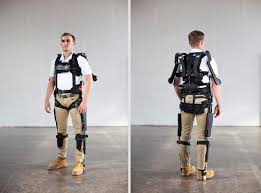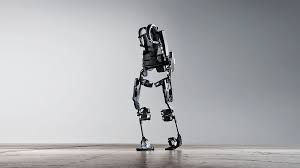
Exoskeletons for Everyone? Tech Giving Us Super Strength
Imagine effortlessly lifting heavy boxes at work, walking without fatigue for miles, or regaining mobility after a serious injury—all thanks to a robotic suit. What once sounded like a superhero fantasy is quickly becoming reality, thanks to exoskeleton technology.
Once limited to science fiction and military labs, exoskeletons are now entering factories, hospitals, and even homes. But how close are we to a future where everyone can wear a suit that gives them super strength?
🤖 What Is an Exoskeleton?
An exoskeleton is a wearable robotic system that supports and enhances human movement. Think of it as a high-tech suit of armor that can:
-
Assist muscles and joints
-
Improve endurance
-
Reduce strain and fatigue
-
Prevent injury
Some are powered with motors and sensors that move with you. Others are passive, using springs and mechanical design to reduce workload.
🏭 Real-World Applications Already Here
Exoskeletons are not just futuristic concepts—they’re already making a difference:
🔧 In the Workplace
-
Companies like Ford, Hyundai, and Boeing use exoskeletons to reduce worker injuries and boost productivity.
-
Shoulder-assist suits help factory workers lift tools overhead for long periods without strain.
🧑⚕️ In Healthcare
-
Stroke and spinal cord injury patients are regaining the ability to walk with rehab-focused exoskeletons.
-
Wearable suits can assist the elderly in maintaining independence and mobility.
🪖 In the Military
-
Armies around the world are testing exosuits to help soldiers carry heavier loads, walk longer distances, and reduce fatigue during missions.
💪 Can They Really Give Us Super Strength?
Not like the Iron Man suit—yet. But exoskeletons do multiply human capability, especially when it comes to repetitive or demanding tasks.
Some suits let wearers lift 50–200 pounds repeatedly with minimal effort. Others enhance walking speed or provide stability to help users stand longer without tiring.
While we’re still a long way from leaping over buildings, functional super-strength is becoming a workplace reality.
🧠 The Tech Behind the Suit
Modern exoskeletons integrate:
-
Artificial Intelligence (AI) for real-time motion adaptation
-
Electromyography (EMG) sensors that read muscle signals
-
Hydraulics and actuators to generate extra power
-
Lightweight materials like carbon fiber for comfort and efficiency
Battery life, weight, and responsiveness are key areas of improvement as engineers make these suits smarter and more practical.
⚠️ Challenges and Limitations
Despite the excitement, exoskeletons face several hurdles:
-
Cost: High-tech suits can range from $5,000 to over $100,000.
-
Accessibility: Most are used in industrial or medical settings, not available for everyday users.
-
Training: Users need to learn how to operate and maintain the suits safely.
-
Regulations: Medical and occupational safety standards still lag behind the tech.
🌍 The Vision: Exoskeletons for Everyone?
Tech companies are working to make exoskeletons lighter, cheaper, and more intuitive. The goal is to eventually have:
-
Delivery drivers wearing leg-assist suits
-
Seniors walking independently without canes or walkers
-
Construction workers lifting without risk of injury
-
Even casual consumers using them for hiking or DIY projects
As prices drop and demand grows, we may see these wearable robots become as common as smartphones or fitness trackers.
🧠 Final Thought
Exoskeletons won’t turn us into superheroes overnight, but they are already redefining what the human body can do. Whether enhancing productivity, enabling rehabilitation, or simply preventing injury, the age of robotic augmentation is here.
The question isn’t if you’ll wear an exosuit in your lifetime—it’s when.
